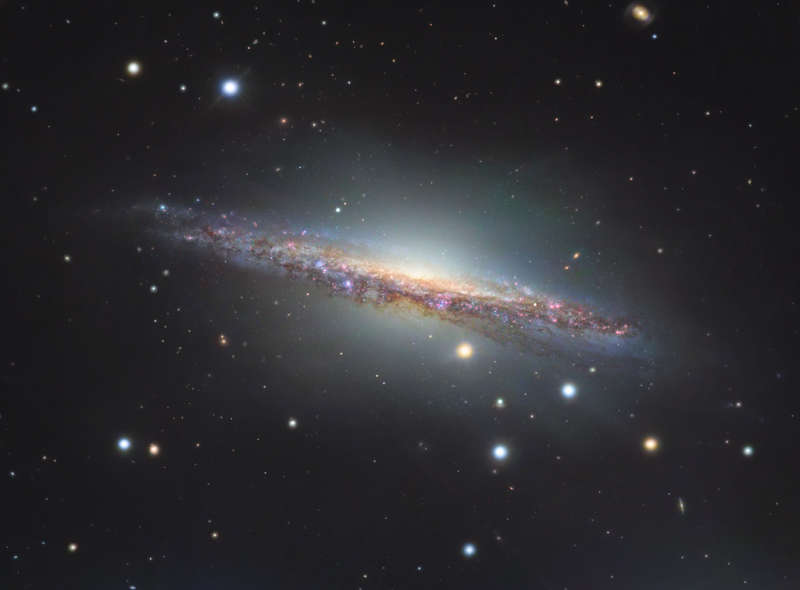
|
Credit & Copyright: Processing -
Robert Gendler,
Roberto
Colombari
Data - European Southern Observatory, Subaru Telescope (NAOJ), et al.
Explanation:
Big, beautiful spiral galaxy NGC 1055 is a dominant member of
a small galaxy group
a mere 60 million light-years away toward
the aquatically intimidating constellation Cetus.
Seen edge-on, the island universe spans over 100,000 light-years,
a little larger than our
own Milky Way.
The colorful stars in this cosmic
close-up
of NGC 1055 are in the foreground, well within the Milky Way.
But the telltale pinkish star forming
regions are scattered through
winding dust lanes along the distant galaxy's thin disk.
With a smattering of even more distant background galaxies, the
deep image also reveals a boxy halo that extends
far above and below the central bluge and disk of NGC 1055.
The halo itself is laced with faint, narrow structures,
and could represent the mixed and spread out
debris from a satellite galaxy
disrupted by
the larger spiral some
10 billion years ago.
Data - European Southern Observatory, Subaru Telescope (NAOJ), et al.
|
January February March April May June July August September October November December |
| ||||||||||||||||||||||||||||||||||||||||||||||||
NASA Web Site Statements, Warnings, and Disclaimers
NASA Official: Jay Norris. Specific rights apply.
A service of: LHEA at NASA / GSFC
& Michigan Tech. U.
Based on Astronomy Picture
Of the Day
Publications with keywords: spiral galaxy
Publications with words: spiral galaxy
See also:
- Portrait of NGC 1055
- APOD: 2025 September 4 Á NGC 4565: Galaxy on Edge
- APOD: 2025 August 22 Á A Tale of Two Nebulae
- APOD: 2025 August 19 Á Giant Galaxies in Pavo
- APOD: 2025 August 18 Á NGC 1309: A Useful Spiral Galaxy
- APOD: 2025 July 4 Á NGC 6946 and NGC 6939
- APOD: 2025 June 30 Á NGC 4651: The Umbrella Galaxy
